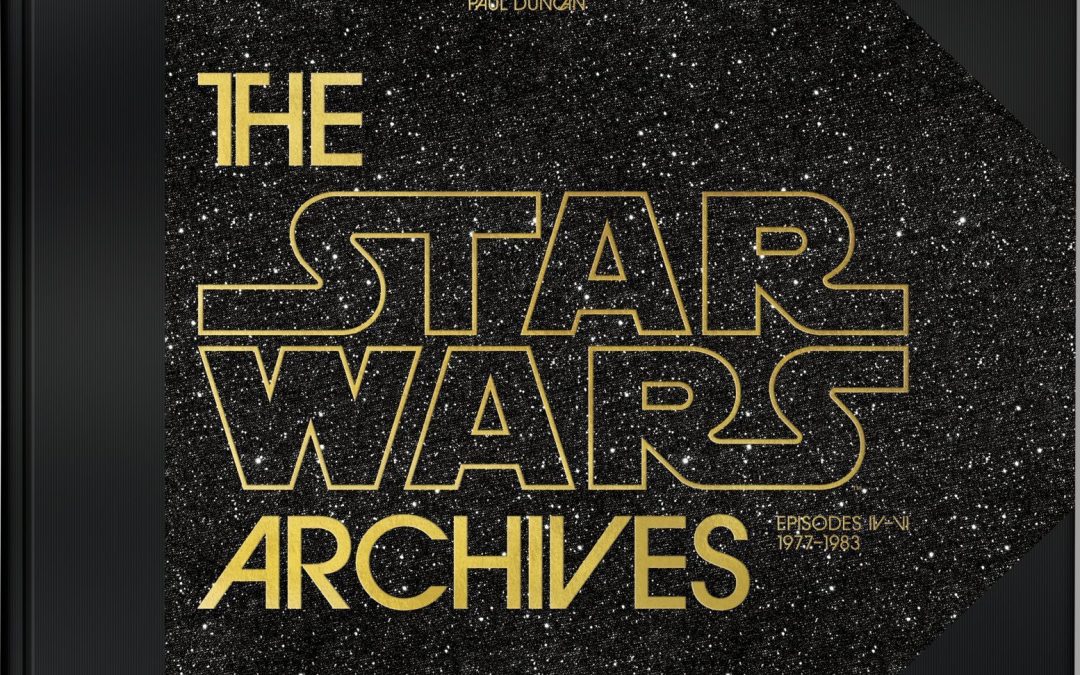Christmas is here, a time of goodwill to everyone; of generous giving; and, if you’re lucky, a time of receiving more expensive books than you might ordinarily buy for yourself. For any Geek readers who still have a couple of empty slots on their lists for Santa, here are nine of the most beautiful, covetable editions published over the last few months – plus one little extra.
Our pick of the best geeky books to gift this Christmas
The Amazing Adventures of Kavalier & Clay
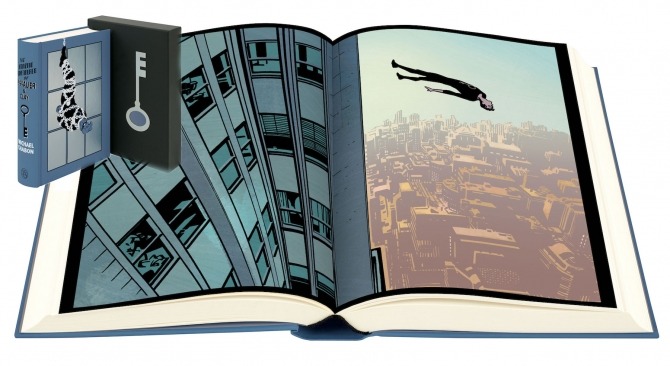
By Michael Chabon Illustrated by Chris Samnee Introduced by Michael Moorcock
The latest of Folio’s larger-format genre releases (following Frank Herbert’s Dune and Neil Gaiman’s American Gods) is Michael Chabon’s literary puzzle box The Amazing Adventures of Kavalier and Clay. Set in New York during the boom in comics publishing – literally comics’ golden age – the story follows two Jewish cousins as they make their way in the funny-book business, navigate relationships, and suffer the effects of the Second World War. In some ways ciphers for Siegel and Shuster – although Superman’s creators are namechecked throughout the novel as people who exist in K&C’s world – Joseph Kavalier and Sam Clay are the creators of whole magazines worth of outlandish characters, chief of whom is The Escapist: a breakout success (pun intended), part Shadow and part Houdini, who jumps from the comics pages into radio and film serials. His creators, of course, do less well out of him than his publishers…
Lauded in Michael Moorcock’s introduction as a Great American Novel (Brett Easton Ellis has made similar claims for it), Chabon’s writing is exquisite, weaving intricate layers of metaphor around the ideas of immurement and escape, escapism, escapology… and while this is real-world New York, with cameo appearances from the likes of Orson Welles and Stan Lee, there are quiet magic realist touches, such as magicians’ illusions that don’t seem quite possible, or the casual inclusion of a golem as a plot point.
This weighty hardcover is slipcased, and the vibrant illustrations that pepper the text are by Harvey Award-winning comics artist Chris Samnee (Mark Waid’s Daredevil, Roger Langridge’s Thor, the Mighty Avenger).
Available from Folio Society, £75
Marvelocity / Mythology – The Marvel / DC Art of Alex Ross
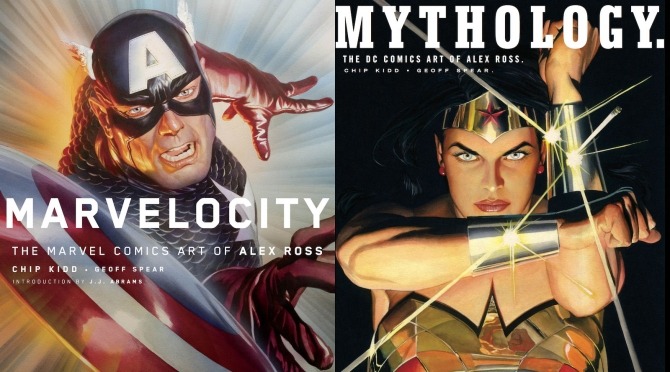
By Chip Kidd & Geoff Spear
Often compared to Norman Rockwell, there’s a sort of Golden Age nostalgia to Alex Ross’ superhero work. As J.J. Abrams points out in his introduction to Marvelocity, there’s a flesh-and-bloodedness to his painted artwork that makes his adoringly depicted heroes seem more solid and real than almost any other artists’ interpretations of the characters. The body types he uses seem to belong to a bygone age. His Superman is much closer to George Reeves than Henry Cavill.
Marvelocity is the brand new book of this pair, following the same format as the earlier Mythology: beginning with some childhood work by Ross before bringing us up to date and charting his work character by character. The earlier Mythology – a compendium of Ross’ DC art – has been re-published in expanded form to accompany the Marvel volume. It has a new cover showcasing Wonder Woman, which renders the chapter about his step-by-step creation of the old Superman dust jacket (“the making of this book’s cover”!) something of a goof. It’s a minor quibble in a stunning volume though. Both books are beautiful – essential even – and both contain brand-new eight-page comic stories, painted by Ross and written by the books’ author Chip Kidd. But Mythology slightly edges Marvelocity for my money. Ross’s style just seems that much more suited to characters from the ’30s and ’40s than to Stan Lee’s counter-culture ’60s mutants. Plus, Mythology has a hefty chunk devoted to Ross’ masterwork Kingdom Come, and a tantalising glimpse of what its mooted sequel/prequel, The Kingdom, might have looked like. And his Joker is up there with Brian Bolland’s and Dave McKean’s as the scariest of all.
Marvelocity and Mythology are both available from Amazon (£22.52 each)
Diamonds Are Forever
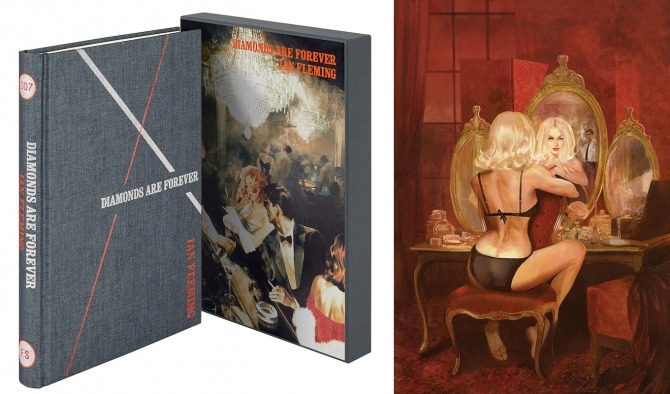
Ian Fleming Illustrated by Fay Dalton
The Folio Society have been gradually publishing these hardcover, slipcased, illustrated editions of Ian Fleming’s original Bond novels for a couple of years now – seemingly in random order. Sixth to be released then is Fleming’s fourth, 1956’s atypical Diamonds Are Forever, which is about American gangsters rather than improbable megalomaniacs in exotic locations. It has little in common with the loopy late-Connery film version – no Blofeld or diamond-powered death-ray satellites or moon buggy chases – but does share some characters and locations. And it’s a cracking adventure in its own right: a sort of brisk palate cleanser separating Fleming’s Moonraker and From Russia With Love. Fleming wrote to a friend that it included “every single method of escape and every variety of suspenseful action that I had omitted from my previous books – in fact everything except the kitchen sink, and if you can think up a good plot involving kitchen sinks, please send it along speedily.”
As with the rest of this series, this edition features painted artwork by Fay Dalton, whose style evokes vintage advertising, pin-up art and pulp paperback covers. Her work across the whole series to date has been a perfect fit, reinventing iconic images like casino scenes, train scenes, car chases, Honey Ryder rising from the sea… Diamonds Are Forever is no exception. I particularly appreciated what appears to be a knowing nod to a classic Pan paperback cover of the ’60s.
Available from Folio Society, £36.95
Harryhausen: The Movie Posters
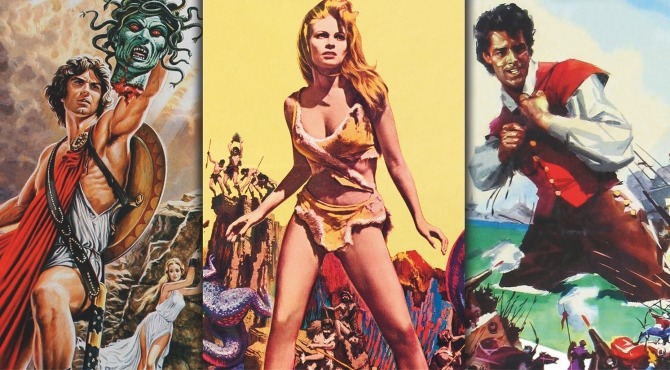
By Richard Hollis Foreword by John Landis
Harryhausen: The Movie Posters doesn’t have a huge filmography to work with. Richard Hollis’ book can’t namecheck a studio’s entire catalogue (like Titan’s Art Of Hammer book), or chart the progress of a franchise over two-dozen films and six decades (like DK’s book of James Bond posters). Instead, he has just 11 titles to archive, plus the documentary Special Effects Titan. It proves a benefit rather than a hindrance, however, since it means he has space to exhaustively document the weird and wonderful variety of posters that accompanied Harryhausen’s work in multiple territories with vastly different marketing and art styles. You’ll believe Raquel Welch can look like a dozen different women! Although there may be less Caroline Munro here than you were hoping for.
Hollis’ introduction sets out his stall, describing Harryhausen’s formative visit to the cinema to see King Kong: lured in not just by the prospect of the film itself, but by the spectacle of its lavish promotion in a classic age of movie marketing. Harryhausen’s own films, right up until 1981’s Clash Of The Titans, got their own equivalent treatment, lavishly reproduced here. John Landis provides a brief but affectionate foreword, remembering Harryhausen as the “mentor and muse” for generations of subsequent filmmakers, including himself.
The Star Wars Archives
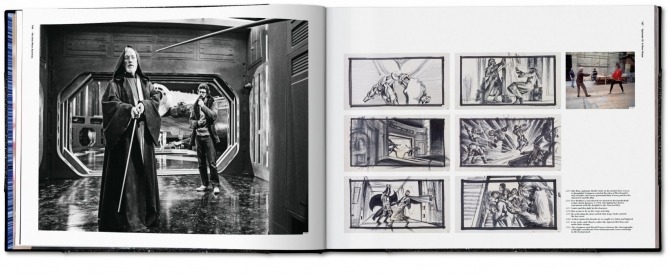
Paul Duncan
The market for Star Wars coffee table books is not under catered. But if you’re looking for “definitive”, at least where the original trilogy is concerned, your search ends here with this whopping new entry in Taschen’s Archives series. As with author Paul Duncan’s previous books in the series (Charlie Chaplin, James Bond, Ingmar Bergman), the approach here is oral history using both pre-existing and newly conducted interviews, stringently fact-checked against original documentation. Narratively, the focus is George Lucas, the book following his timeline, ideas, actions and interactions with others as he oversees the films from 1977 to 1983.
Many of the images (storyboards, concept art, model and effects work in progress etc) are familiar from other publications, but there will also be reams of material you’ve never encountered before, not least of which is a vast new interview with Lucas, conducted by the author over three days. 620 pages; more than 1200 images; 150,000 words: as a history of Star Wars’ beginnings it’s difficult to imagine this ever being superseded. And Duncan throughout refers to the original 1977 film as ‘Star Wars’ rather than ‘A New Hope’, which is just the icing on the cake.
Absolute Batman: The Killing Joke 30th Anniversary Edition
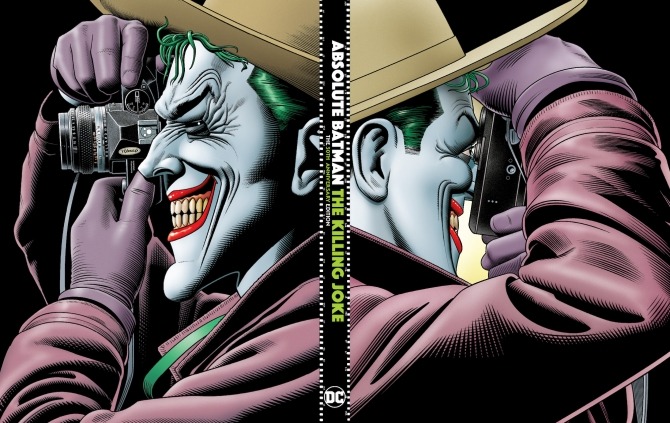
By Alan Moore & Brian Bolland
Once considered a nailed-on classic, The Killing Joke has seen its reputation decline to some extent in recent years, as discomfort at its treatment of Barbara Gordon (paralysis by shooting, followed by sexual humiliation) at the hands of the Joker has grown. The hamfisted animated adaptation, which attempted to address those problematic aspects but ended up making them worse, hasn’t improved the graphic novel’s latter-day standing. So in some ways it’s a surprise to see it given DC’s super-deluxe “Absolute” treatment.
Re-reading it now, the Barbara Gordon element notwithstanding, it feels like a jarringly slight piece of work compared to its heavyweight reputation (hence the lower-than-usual price for an “Absolute”). Only a few pages longer than a standard single-issue comic, it involves the Joker hatching a plan to prove that anyone is only a single dire event away from madness. Moore, true to form, has all but disowned it, and he’s pretty much correct in his retrospective assessment that it was never really about anything. The aspect that’s a Joker origin story also arguably tells us more than we care to know. But what The Killing Joke does still do is act as a showcase for the stunning artwork of Brian Bolland, who was always the driving force behind the project. The Joker can become tiresome with overuse, but in Bolland’s vision, he is still terrifying.
That vision comes in two versions here. Bolland was never happy with the colouring of the original late ’80s edition, so completely re-did it for the 25th anniversary five years ago. His version, in his preferred colder, bluer digital palette, is followed by the entire story again in the original painted purples, greens and yellows by John Higgins (Bolland’s is the Batman palette and Higgins’ the Joker’s, basically). Oddly, Higgins’ section is printed on coarser, poorer quality paper than the heavy, glossy rest of the book. I asked him via Twitter why this was, and he told me it was an editorial decision to give his colours a different texture to Bolland’s: essentially an analogue vs. digital distinction. So that’s the explanation, even if it was a dubious call. Bolland and Higgins both get prefaces to explain their respective colouring decisions, and the book is further bolstered by two more short Bolland Joker pieces; the usual gallery of covers and pencil sketches; and Alan Moore’s dense original script, which hopefully puts to rest the recent phenomenon of people reading the final panels as Batman killing the Joker. Spoiler alert: he doesn’t.
Side note: A prose novelization of The Killing Joke has also been published in recent months, written by mystery/noir authors Christa Faust and Gary Phillips. It mashes up a faithful adaptation of the comic (down to the “fnap” of the Joker’s playing cards) with an entirely new plot in which Batman, Batgirl, Gordon and Bullock take on Maxie Zeus, Python and a crime cartel distributing the Joker’s new addictive street drug “Giggle Sniff”. Harleen Quinzel is revealed to be behind the Joker’s escape from Arkham at the beginning (setting up the next novelization in Titan’s oddball project, Mad Love), and Barbara is given slightly more agency during that sequence. Spoiler alert: Batman still doesn’t kill the Joker.
The Killing Joke (£11.36) and Mad Love (£10.73) novels are also available from Amazon
V For Vendetta – 30th Anniversary Deluxe Edition
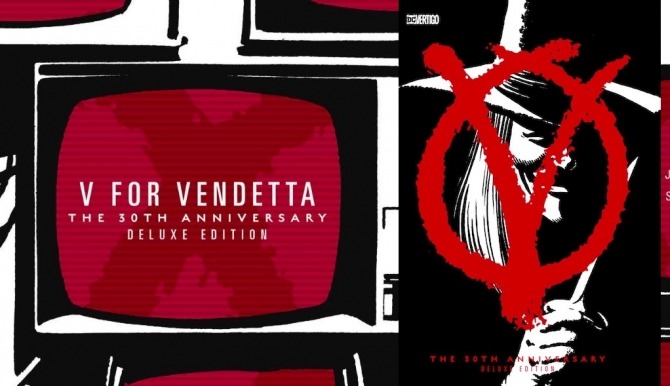
By Alan Moore & David Lloyd
While we’re on the subject of Alan Moore, it’s great to see his beyond-classic V For Vendetta available again as a DC “Deluxe” hardcover. For years there’s been a paperback and the ultra-posh, very pricey “Absolute” edition and nothing in between. This 30th Anniversary edition, replicates the contents of its higher-end sibling (in a smaller format and without the slipcase), presenting the graphic novel itself on high-quality paper with vibrant colours, complemented by Moore and artist David Lloyd’s introductions, and Moore’s lengthy afterword “V: Behind The Painted Smile“. The latter was originally written and printed in 1983 in the pages of Warrior while V was still ongoing, and is fascinating for its glimpse of V as still an incomplete work in progress. Moore discusses a book that was quite changed by the time it was complete.
Starship Troopers
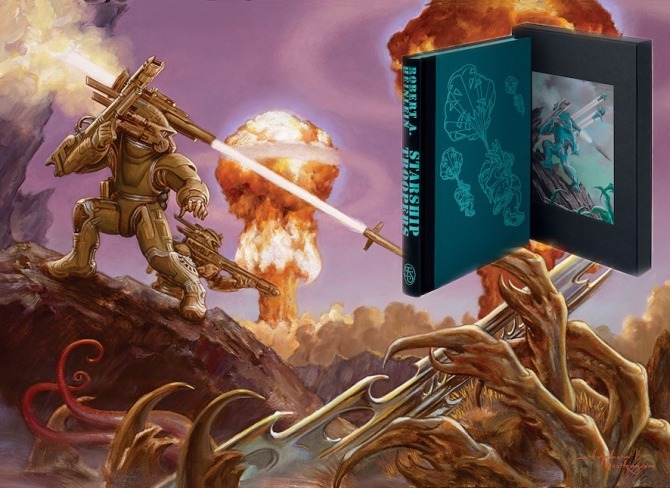
By Robert Heinlein Illustrated by Stephen Hickman Introduced by Joe Haldeman
Infamously, Paul Verhoeven found Robert Heinlein’s Starship Troopers so offensive in its love for the military that he decided the only way to adapt it was vicious satire. His 1997 film gleefully depicts jackbooted, white-toothed American space-fascists laying waste to the galaxy under a Nazi flag, leaving the original novel in its wake as something distasteful to be avoided. In giving it their deluxe treatment – including plates of painted artwork by award-winning American artist Steven Hickman, glittery blue page edging and a slipcase – Folio are arguing it deserves a revisit. Give it the benefit of the doubt and you might find it a persuasive line.
Forever War author Joe Haldeman’s introduction is hilarious: attempting to argue for Starship Troopers’ status as a classic while clearly loathing it with the fire of a thousand suns. His basic point, I think, is that it’s possible to enjoy it and forgive it based on its historical context, while still acknowledging that it leaves a sour taste in the mouth. And he’s right. For all its narrative shortcomings and distasteful philosophies, it’s still a rip-roaring bug hunt. It’s possible, for the duration of a story, to buy into the crucifixes and holy water of vampire novels and movies without being a practising Christian. It’s possible, for the duration of a story, to buy into a vigilante action hero without really believing that criminals should simply be gunned down in the streets without due process. And it’s possible, for the duration of Starship Troopers, to flip your cognitive dissonance switch and buy into its bonkers right-wing militaristic fetishism without being an actual fascist. Verhoeven’s film gives audiences an opt-out. We feel smart for recognising and enjoying the satire, but if we’re honest, it’s probably the extreme violence we’re most enjoying. Heinlein, in his own way, is actually more confronting than that. And the jump suits are cool.
Available from Folio Society, £49.95
Spider-Man: The Art Of The Game / Spider-Man: Into The Spider-Verse – The Art Of The Movie
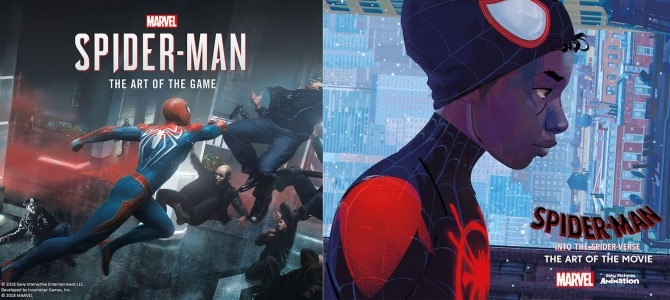
By Paul Davies / Ramin Zahed
2018 has been a good year for Spidey. Not only did he get a star turn in Avengers: Infinity War, he also has his own animated film imminent in the form of Into The Spider-Verse, and he’s starred in a seriously strong video game. The Avengers movie was itself the subject of a handsome Marvel art book earlier in the year, and it’s now joined by two entirely Spider-centric titles from Titan.
Veteran games journalist Paul Davies’ The Art of the Game lays out hundreds of images that went into the meticulous breaking-down-and-rebuilding of Spider-Man’s world as a fully-realised and explorable player environment. Fully rendered 2D splash-page setpiece images sit alongside 3D models of characters, equipment and locations, character studies, and even sketches on lined notepaper! I especially chuckled at the description of the work that went into making Silver Sable not look like an aerobics instructor.
Taking an unexpectedly large role in the video game was alternate Spidey Miles Morales. It’s his version that’s centre stage in Into The Spider-Verse, along with any number of other versions from the limitless multiverse of the title. Spider-Ham, anyone? Ramin Zahed is an American journalist and the editor of Animation Magazine. Here he ropes (webs?) in Ultimate Spider-Man writer Brian Michael Bendis for the foreword, and scores input from the film’s directors Phil Lord and Chris Miller and their team across glossy pages of storyboards, concept art and final designs reflecting the wildly differing art and animation styles of the film’s distinct worlds.
Spider-Man: The Art Of The Game (£18.98) and Spider-Man: Into The Spider-Verse – The Art Of The Movie (£20.99) are both available from Amazon
Bonus stocking filler!
Jonesy: Nine Lives on the Nostromo
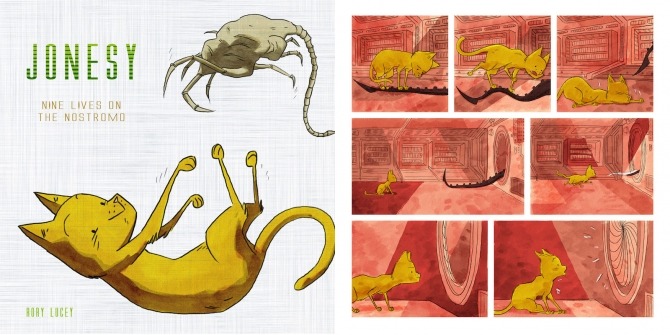
By Rory Lucey
One for cat lovers, Alien fans, and especially Alien-loving cat fans, artist and illustrator Rory Lucey’s completely wordless picture book takes us through the events of Alien from ginger mog Jonesy’s point of view. Ever wondered what the Nostromo’s ship’s cat was doing while the guys were down on the planet collecting facehuggers? Or where he was when Kane exploded? Or what he was doing in the lead-up to the bogus jump-scare for which he’s infamously responsible? Your answers are all here. Giger’s creature was never so charming.
Available from Amazon (£7.10) and a perfect stocking filler!

